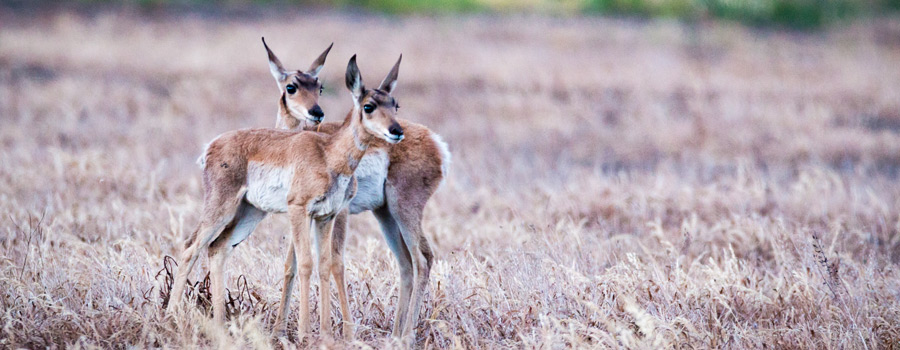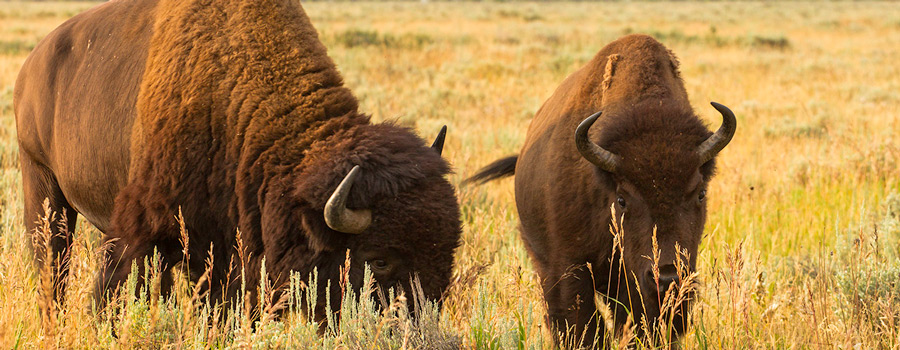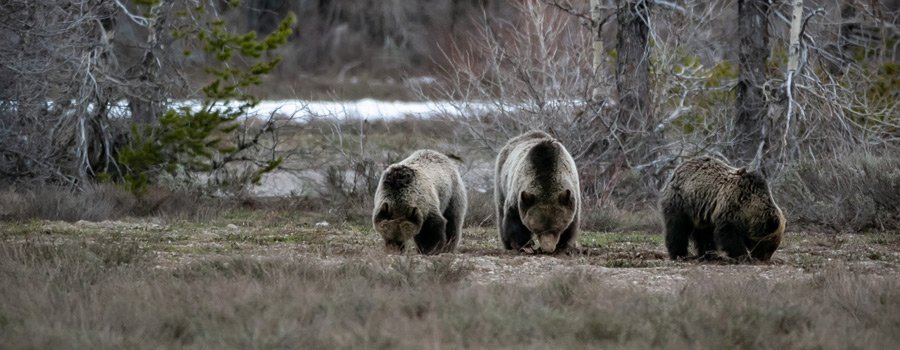Spring has sprung here in Jackson Hole! This is a very special time when snow gives way to fresh grass, the first spring flowers bloom and when many native wildlife give birth.
I will never forget the first time I saw a baby pronghorn. Early in the morning on a misty rainy day in Grand Teton National Park I was taking some visitors out to see if there would be any wildlife action and we figured we would not see anything because it was cold and rainy. No other humans were out in the park, but surprisingly we came upon a lone female pronghorn. We then noticed the sagebrush beneath her moving and then appeared the tiniest, little fawn. It became evident that this fawn was just learning to walk and had been born just that morning. It was one of the most captivating things to behold during this very personal moment in their lives. It was amazing to witness the birth of the fawn, the mom cleaning it and the baby learning to walk all out in an open field with only the privacy provided by the mist and rain. We decided to move on through the park and leave them in solitude. That same day we saw newly born elk calves and the first red dog baby bison of the year. It was a magical experience to see the gentle and quite beginnings that spring morning. The young wildlife is a great reminder of the continued cycle of life and they give hope to the continued copiousness of wildlife in the Greater Yellowstone Ecosystem, the last remaining large, nearly intact northern temperate zone ecosystem on Earth.

Bison start birthing in late March while Pronghorn, Moose, Elk and other deer all give birth starting in May. Bison newborns are called red dogs because of their fur being a burnt orange red color. They are extremely playful and a real spring delight with their added joy. Elk and Pronghorn females separate from the group to birth, tend and feed there babes for two weeks. After licking all smells from their fawns, they will leave them to hide in the sage and grass for hours while the mothers browse for food. Then, once the new fawns are ready to keep up, they will bring their offspring back to the herd for further safety. Moose mothers, who are generally loners, are particularly protective of their calves and will charge anyone who gets too close while doe elk will also give you signs that you are making them agitated and to not threaten their fawn or else!

Bears have their cubs during hibernation and when they come out of hiding in the spring they will have one to five cubs in tow. Locally we generally see one to two cubs. The cubs will stay with them for two years while they learn to forage and fend for themselves. With both grizzly and black bears in the area, there is a high chance of seeing them in Jackson Hole. This year the famous grizzly bear 399 has already been seen with her two cubs born last year. Bear 399 is famous because she can often be seen from the roadway in Grand Teton National Park. When a sow has cubs, she is not mating. Male bears, called boars, are likely to attack cubs and try to kill them to make the sow available for mating again and to defend their territory. It is theorized 399 stays close to the roads because it protects her and her cubs from male predation.

At Jackson Hole Resort Lodging we work with local guide services to get you out into the parks with educated and seasoned guides who can help you find and view wildlife safely while sharing information on the areas geological, ecological and historical background. Spring brings the promise of keeping our abundant wildlife healthy and happy for this year and years to come. We hope you can join us in enjoying their presence when you visit Jackson Hole. Please contact Jackson Hole Resort Lodging to make reservations for your upcoming stay at jhrl.com or 800. 443.8613 as well make reservations to see this magical wildlife.
-Shannon Clay, Vacation Specialist
